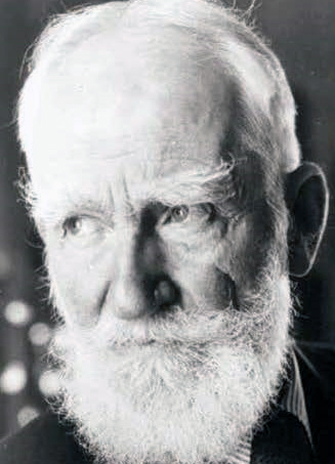Playwright George Bernard Shaw is known for such masterpieces as Pygmalion and Androcles and the Lion, but few people are aware that Shaw was also an accomplished musician and composer.

That’s about to change thanks to work by a group of researchers at York University who have recorded and released Shaw’s Musical Universe, a new CD featuring the vocal talents of Brigitte Bogar, a professional soprano and York PhD student in music, together with Professor Christopher Innes, Canada Research Chair in Performance & Culture.
Bogar and Innes were aided in this venture by York music Professor Michael Coghlan, who provided piano scores adapted from Shaw’s vocal lines. Also featured in the recording is pianist Raisa Nakhmanovich, a part-time faculty member in the Department of Music at York University.

The CD is the result of extensive research by Innes and Bogar that was conducted at the British Library, the New York Public Library, the Humanities Research Centre in Austin, Texas, and other institutions. The research revealed music composed by Shaw and by his mother.
“None of this music has ever been recorded before, and indeed the music by Shaw has never even been published, while the compositions by Lucinda Carr Shaw, his mother, only exist in sheet music from the 1860s and 1870s,” says Innes. “As a result, all this music is completely unknown today; and the recording is something totally original, so that the CD contains strikingly new and insightful material.”
Putting it out in this form – with the actual sound of the music available to listeners – will have a significant impact on the way Bernard Shaw is perceived, both by Shaw-scholars as well as the wider literary community.
 Shaw’s mother was not only a pianist and composer, but also an opera singer, who eventually left her husband to follow her music-teacher, Vandeleur Lee, to London, where the young Shaw joined them. “Taking all this into account, and knowing that she practised at home, one can see that Shaw’s upbringing was full of music; and indeed his younger sister became a successful singer of operetta on the London stage,” observes Innes.
Shaw’s mother was not only a pianist and composer, but also an opera singer, who eventually left her husband to follow her music-teacher, Vandeleur Lee, to London, where the young Shaw joined them. “Taking all this into account, and knowing that she practised at home, one can see that Shaw’s upbringing was full of music; and indeed his younger sister became a successful singer of operetta on the London stage,” observes Innes.
Shaw also claimed to be able to sing several of the operas his mother performed; and this background to the music as well as introductions to all the individual songs is discussed in the booklet that is part of the CD package, which also contains several photos of Shaw playing different musical instruments: not only the piano, but a clavichord and mandolin.
In addition to being the leading British dramatist over the first half of the 20th century, in the 1880s Shaw was also a music critic – and indeed is still counted as one of the leading music critics of the English-speaking world – but hardly anyone is even aware that he was expert enough to compose his own music.
He also wrote the music for several of his own plays, but while these pieces may have been performed in the first production that Shaw was directly involved in, with the exception of three bars of a vocal line in the epilogue to Saint Joan, in other plays there is no indication that music is even present, says Innes.

“So this vocal/piano rendition will contribute significantly to his reputation as a music critic, as well as to the interpretation of these plays; and in addition to Shaw and his mother’s own compositions, the CD presents some of the songs by other people that he included in his plays, some of which we know were also sung by his mother,” says Innes. “As a result the CD is an original and important contribution on all levels.”
To indicate its international as well as local interest, the CD will be sold not only at the Shaw Festival in Niagara-on-the-Lake, but also through the National Trust at Shaw’s house in Ayot St. Lawrence, UK.
More information on the CD is available by contacting brigitte.bogar@gmail.com or cinnes@yorku.ca.


